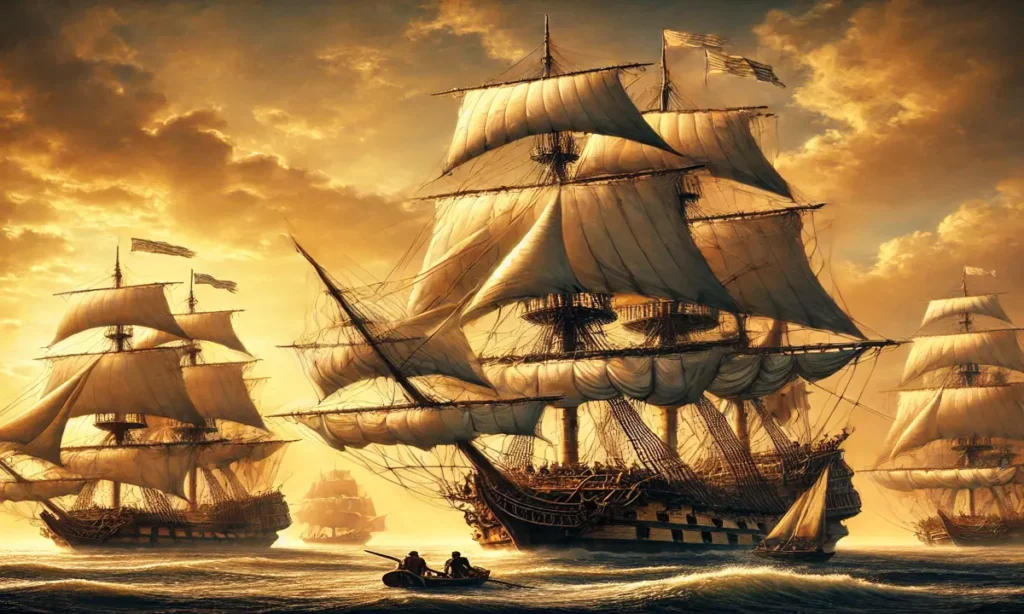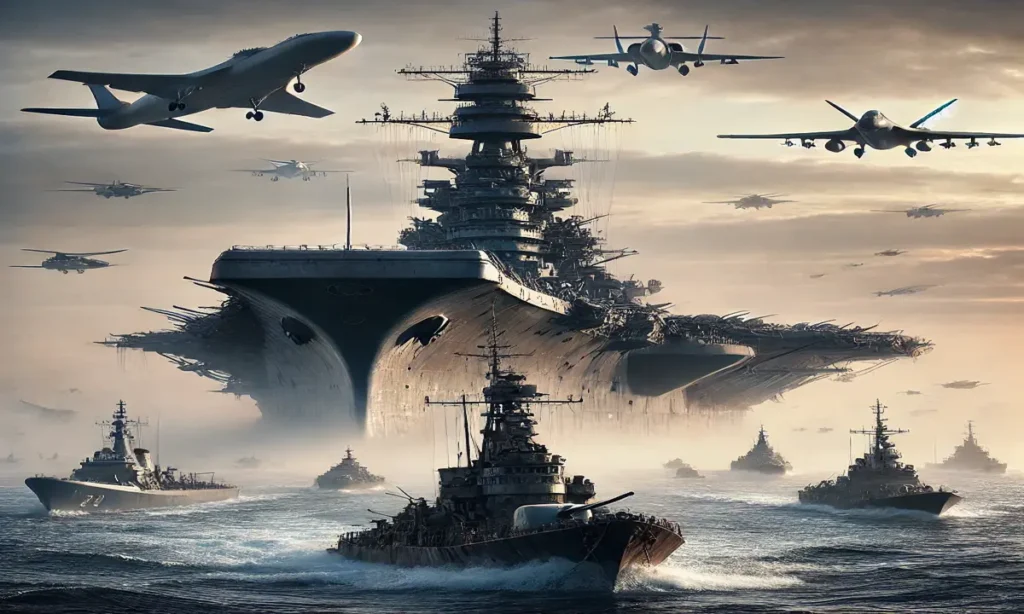Naval warfare has changed a lot over the years. Ships started as simple wooden boats powered by the wind. Over time, they grew into massive steel ships with powerful weapons.
One of the best examples of this change is the battleship. In this article, we’ll look closely at how battleships evolved. They began as small sail-powered ships and later became giant steel warships that changed history.
Eventually, new technologies replaced them. Battleships played a major role in shaping nations and determining the outcomes of wars.
Let’s take a journey through their history and see how they changed naval combat forever.
The Birth of Naval Warfare: A New Era Begins
Naval warfare didn’t always involve massive ships with heavy artillery. In fact, it started with simple wooden boats used for basic transportation and trade. The early sailors and warriors didn’t have much protection against the harsh elements of the sea.
But over time, people realized the strategic importance of controlling the waters, and that’s where the idea of naval combat was born.
By the 1500s, countries began building larger ships equipped with cannons for defense. These ships were much more powerful than the small boats of the past, and they could hold more weapons, making them formidable in battle.
The need for stronger ships became apparent, and with this, the race to build the perfect warship began.
Also Read: Antarvacna
The Age of Sail: Pioneering New Frontiers

The Age of Sail began in the 16th century, lasting until the 19th century. During this time, nations like Spain, England, and Portugal took to the seas, not just for exploration but also for power.
These nations needed large warships to protect their growing empires and assert dominance over other countries.
Galleons and men-of-war were the key players in this era. These ships were primarily powered by wind, with massive sails that could catch the breeze to propel the ship forward.
The naval battles of this time were fierce and often determined by a ship’s ability to outmaneuver the enemy and fire their cannons effectively. It was a time of great naval discoveries, and battleships began to take shape as key military assets.
The Rise of the Battleships: From Wood to Iron
The 19th century brought major changes in naval warfare. With the introduction of gunpowder and cannons, battleships became more powerful.
But it wasn’t just the guns that made these ships deadly – it was the materials used to build them. Wooden ships, though powerful, could be easily damaged in battle, and that’s where the ironclad revolution came into play.
Ironclads were ships that had iron or steel hulls, which made them far more durable than wooden ships. This new technology gave naval forces an edge in battle, as ironclads could withstand gunfire and other attacks that would easily destroy wooden ships.
The rotating turrets on these ships also gave them a tactical advantage, as they allowed for greater maneuverability and accuracy in battle. The emergence of ironclads marked a new era in naval combat, changing the way battles were fought at sea.
The Battleships in World Wars: The Heart of Naval Power
World War I and World War II were pivotal moments for the battleship. These wars saw some of the most intense naval battles in history. The British Grand Fleet and the German High Seas Fleet faced off during the Battle of Jutland in World War I, demonstrating the importance of battleships in controlling the seas.
The ships were not only vital for combat but also for protecting trade routes and strategic locations.
During World War II, battleships continued to play a key role. However, as the war went on, it became clear that new technologies, like aircraft and missiles, were beginning to outpace the traditional battleship.
The bombing of Pearl Harbor in 1941, where Japanese aircraft attacked the US fleet, showed just how vulnerable battleships could be to airstrikes. Despite this, battleships still played a major role in key battles and were seen as symbols of power and strength.
The Decline of the Battleship: A New Era in Naval Warfare

As technology progressed, the mighty battleships began to lose their dominance. Aircraft carriers, submarines, and missile-equipped ships started to take the lead in naval warfare.
Battleships, once the kings of the sea, were no longer as effective in modern combat. The introduction of aircraft and missiles meant that battleships were at a disadvantage, as they were slow, vulnerable, and unable to keep up with the rapid changes in naval technology.
By the end of the 20th century, most battleships had been decommissioned, with their legacy now preserved in museums and memorials. Though they were no longer the main weapons of naval forces, their impact on military history remains undeniable.
They taught us important lessons about naval strategy, the importance of technological advancements, and the evolution of warfare itself.
The Legacy of Naval Ships: Honoring the Past
Even though battleships are no longer the backbone of modern navies, their legacy continues to live on. Many of these historic ships are now preserved as museum ships around the world, serving as a reminder of the power and strength they once represented.
Visitors can walk through the decks of these giants and imagine what life was like aboard these massive warships.
The legacy of battleships also lives on in naval training and tactics. Many of the strategies developed during the era of battleships are still used today, albeit with more advanced technology.
The lessons learned from these mighty ships continue to influence naval operations and inspire new generations of sailors and military leaders.
FAQ
What is a battleship?
A battleship is a large, heavily armed warship designed for naval combat. Battleships were used primarily during the 19th and 20th centuries and were known for their powerful guns and thick armor.
When did battleships become obsolete?
Battleships began to decline in importance after World War II, with the rise of aircraft carriers, submarines, and missiles. By the end of the 20th century, battleships were no longer the dominant force in naval warfare.
Why were battleships so important in history?
Battleships were crucial during both World Wars. They served as powerful symbols of naval strength and played a key role in naval battles, protecting trade routes, and maintaining military superiority on the seas.
What replaced battleships in modern naval warfare?
Aircraft carriers, submarines, and missile-equipped ships have largely replaced battleships. These newer technologies are faster, more versatile, and more effective in modern warfare.
Can you still see battleships today?
Yes, many retired battleships have been preserved as museum ships. Examples include the USS Missouri in the United States and the HMS Belfast in the United Kingdom. Visitors can explore these ships and learn about their history.












